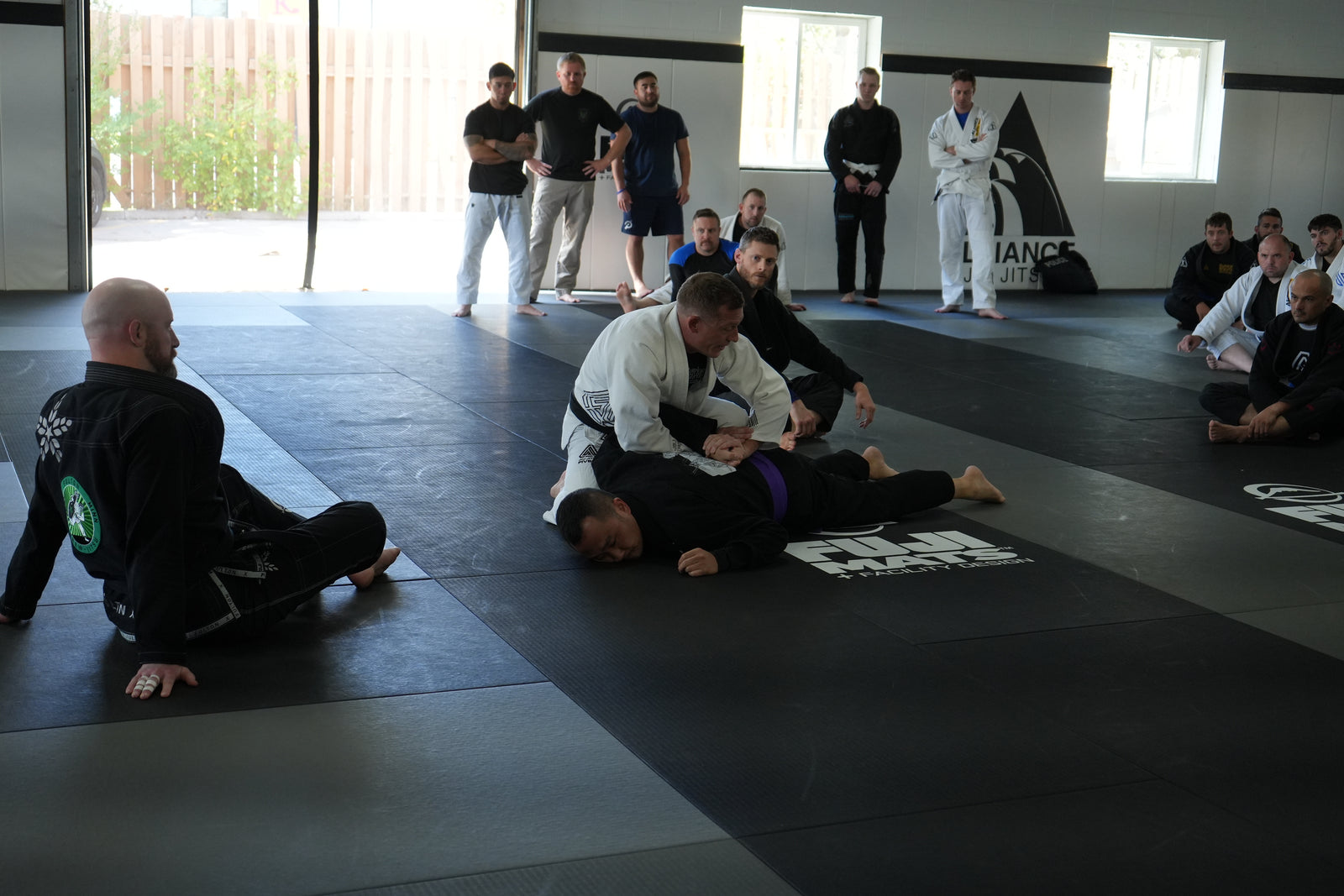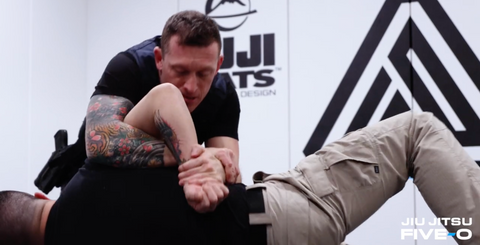Understand the Fundamentals: Emphasizing Concepts Over Techniques in Jiu Jitsu Training for Police Officers

If you work patrol, you've most likely been in a use-of-force encounter - or several depending on where you work and how long you've been on the job. More and more police departments and individual law enforcement officers are starting to see the benefits of Brazilian Jiu Jitsu (BJJ) training to help deal with these situations more efficiently and safely. However, if you're new to BJJ training, it's easy to get caught up in specific techniques and fancy submissions, which can become really overwhelming. The solution? Understand concepts first. Let's talk about this in more detail and how you can shift your learning approach for more success.
The Challenge with Technique-First Learning
-
It's Overwhelming: Jiu Jitsu is infinite. It may seem like there are only so many techniques you can learn, but those who have been training for several years will tell you that's simply not the case. For a newer grappler, the sheer volume of techniques can be daunting. Remembering each step of a technique during a stressful situation might not always be feasible.
-
Variable Situations: On the street, no two situations or subjects are the same. A Jiu Jitsu technique that works seamlessly in training might not be as effective against a resistant or uncooperative individual.
-
The Never-Ending Evolution of BJJ: Jiu Jitsu is always evolving. If you're solely chasing techniques, you might find yourself in a never-ending loop of trying to play catch-up, especially as a new grappler who has not yet established their own style of Jiu Jitsu (you'll learn more on that as you progress through the ranks).
The Strength of Focusing on BJJ Concepts over Techniques
-
Broad Applicability: Grasping a single concept can help show you the mechanics behind numerous techniques. For instance, understanding "leverage" will aid officers in safely controlling individuals, whether during a takedown or a control hold.
-
Real-Time Adaptation: Real-life situations are fluid and dynamic. A conceptual understanding allows officers to adjust their approach based on the situation rather than being stuck if a particular technique isn't working.
-
Insight: Understanding how and why BJJ techniques work ensures that officers aren't just going through motions, but truly comprehending the techniques, leading to safer and more effective application on the street.
Essential Jiu Jitsu Concepts for Police Officers
-
Leverage: This is fundamental to BJJ. Leverage allows officers of any size to control larger or more aggressive individuals safely and efficiently. That's not to say that the size and strength of your opponent doesn't matter, it just means that understanding how to use leverage will give you a huge advantage over bigger, stronger subjects when trying to control them.
-
Base and Balance: For an officer, a strong base means maintaining control, whether standing or during ground fights. A few examples include defending a takedown, or preventing yourself from getting reversed from a top position and ending up on the bottom. Base and balance play key roles in these grappling situations.
-
Distance Management: This is about controlling space. For officers, it can mean the difference between preventing an escalation and being caught off guard.
-
Control Before Cuffing: This concept emphasizes establishing a dominant position and gaining complete control before the handcuffs even come out. Too often, we see cuffs coming out too soon, which tie up your hands, makes it more difficult to control a subject, and increases the potential for injury to everyone involved.
Integrating Concepts into Police Jiu Jitsu Training
Ways to use these concepts:
-
Always Question: When introduced to a new technique, think about its underlying principle. Why does it work? What makes it effective? In what situations could this be applied?
-
Scenario-based training: Use sparring sessions to replicate real-life situations. Instead of just "rolling," focus on applying BJJ concepts in these scenarios. For example, have a role player start from their hands and knees or "turtle" position with the goal of getting back to their feet, while two other partners work as a team to get the role played controlled and into a prone cuffing position. This is a common scenario on the street and there a lot of concepts built into these positions (leverage, base, etc).
-
Diverse Learning: Attend seminars, watch instructional videos, and engage with BJJ experts. The broader your exposure, the deeper your understanding will become. Members of the Jiu Jitsu Five-O mobile app can learn Jiu Jitsu on-demand, including concepts, techniques, positions and partner drills for almost any scenario you may find yourself in on the street.

Techniques are an essential part of the Jiu Jitsu training process. However, for police officers, who often have to make split-second decisions in high-pressure situations, understanding the fundamental concepts of Brazilian Jiu Jitsu can be a game-changer. It will also help make you a better grappler as you continue training. By prioritizing concepts over individual techniques, officers can equip themselves with a versatile set of tools that can adapt to different variables they often face. Remember, it's not just about knowing how to perform a technique, but understanding the science and strategy behind it.


